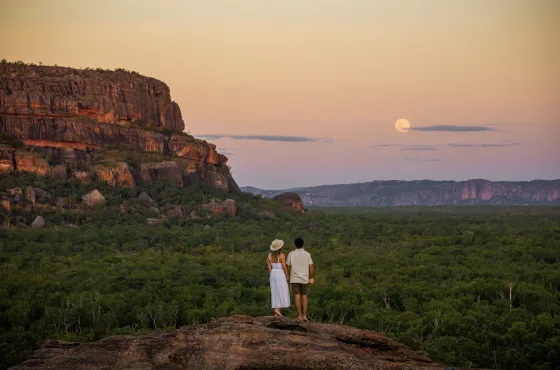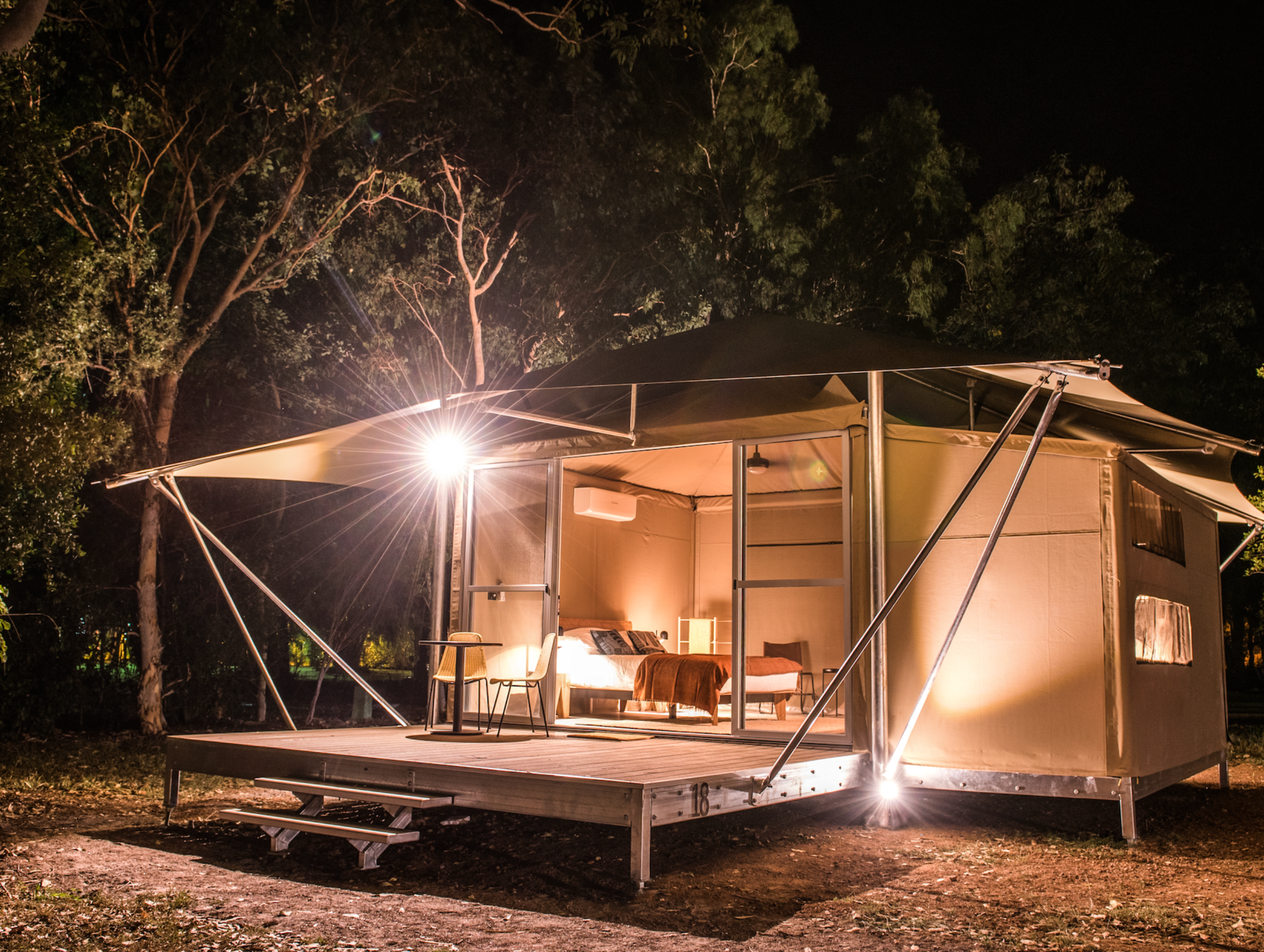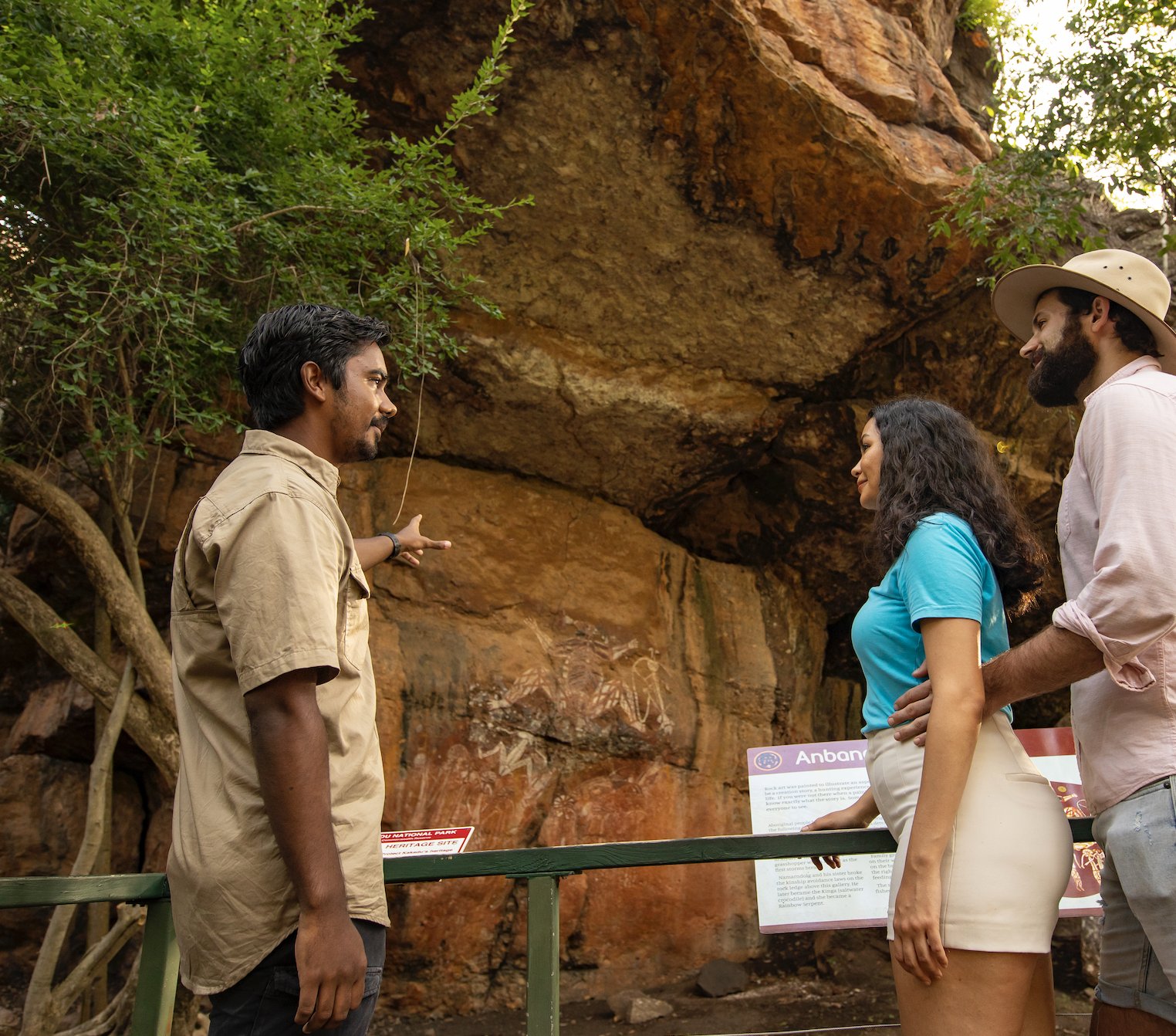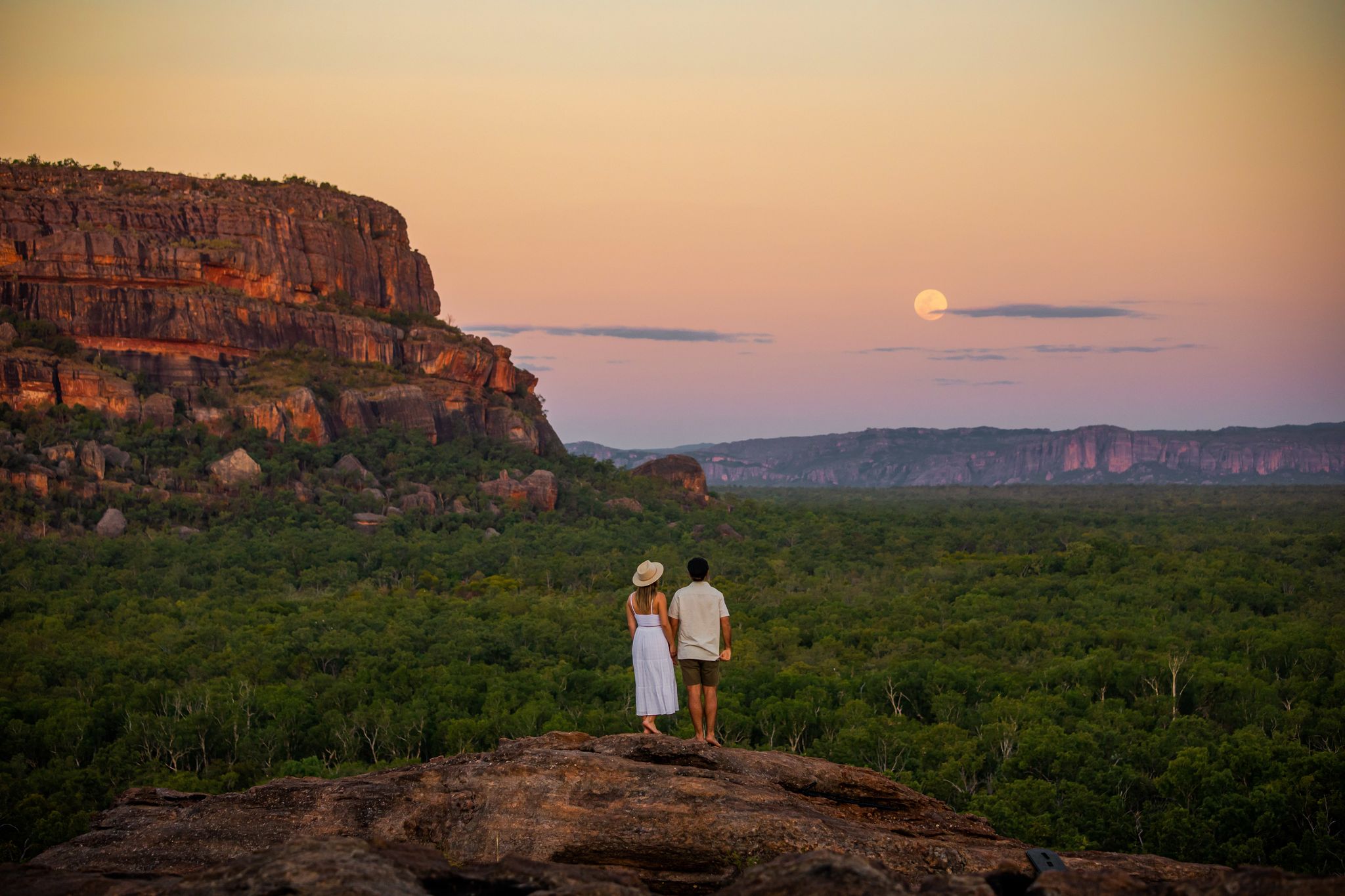
Ancient ways and modern comforts in the Top End
According to Tourism NT, there are now more than 150 authentic Aboriginal culture experiences offered across the tropical Top End and iconic Red Centre.
They include the Laundry Gallery, which launched last year in suburban Parap. This Aboriginal-owned and operated exhibition space supports remote female artists, says co- founder Nina Fitzgerald, whose family hails from Kakadu, the Torres Strait Islands and the Wuthathi people of northeast Cape York. We step inside the spruced-up shell of a 1970s-era laundromat to find light lavender walls displaying works on canvas and paper, woven baskets and hand-painted wooden carvings. The gallery also hosts workshops. We’re here for a class designed to teach 20 key words in Kunwinjku, a dialect of western Arnhem Land’s Bininj Kunwok language, under the tutelage of Jeanett Burrunali from Bininj Kunwok Regional Language Centre.
“(Bininj) is one of the top 10 strongest Indigenous languages of Australia,” says Burrunali, who speaks seven langua- ges, including four dialects of Bininj. Later, my mind swimming with words such as “manme” (food), “kamak” (good) and “bobo” (goodbye), my head hits the pillow at Adina Apartment Hotel Darwin Waterfront. The property is partly Indigenous-owned, with almost two in five employees identifying as First Nations Australians and Aboriginal artwork around every corner. I’m staying in a one-bedroom apartment overlooking the city’s wave pool, lagoon and promenade, recreational facilities that are popular with locals because they’re crocodile-free.
The following day, we’re up early for a day trip to the smaller of the two main Tiwi Is- lands, 80km north of Darwin.
“Welcome to Bathurst Island,” says pilot Leslie Snuderl, as our eight-seater touches down on the tarmac. Here to greet us is Tiwi elder Edward (Teddy) Portaminni who, with wife Teresia, has run Tarntipi Bush Camp for the past eight years, immersing visitors in Tiwi culture by having them spend time with family on country. Although Tarntipi is the only Tiwi-owned and operated accommoda- tion on the island, guests must be prepared to rough it, camping in tents and self-catering (“except for some fresh fish”). Typical activities include basket-weaving, spear-making, fishing, swimming and storytelling.
We’ve arrived at the tail end of a bumper wet season, which has cut off road access to the camp, so Portaminni is instead giving us a taste of what guests can expect by exploring the 2000-strong township of Wurrumiyanga, formerly Nguiu. The day unfolds in a blur of bold ochre col- ours and cultural pride, as we explore a range of venues, including award-winning Bima Wear and the Tiwi Design art centre. When we arrive at Ngaruwanajirri, a work space for artists with a disability, Portaminni points out the arched ceiling, decorated with distinctly Tiwi motifs and geometrical designs. “It’s like the Sistine Chapel,” he says.
Most eye-opening are the personal stories, such as how Portaminni’s grandfather had four wives, but “when the priest (Father Fran- cis Xavier Gsell) came (in 1911) everything changed”. He recalls eating meals at the Bathurst Island Mission site where the Patakijiyali Museum now stands, and we drive by the his- toric Nguiu church where our hosts married in 1977 (and which featured in the 2019 film Top End Wedding).
On our return to Darwin, we head to Ad- miralty House for a four-course meal pre- pared by executive chef Michael Foster, a 28-year-old Darwin-born Aboriginal man with family ties to country in Daly River and Kakadu. Drawing on menus from two restaurants here – The Darwin Club upstairs and Char downstairs – we dine on kangaroo carpaccio served with Kakadu plum jam, grilled Skull Island tiger prawns with finger lime and lemon myrtle-crumbed King George whiting. Foster prefers to pique diners’ curiosity about native ingredients rather than “whack them with it”. “By introducing them in a different way and hav- ing them off centre, they will want to know more,” he explains.

The next morning, after a breakfast at Aboriginal Bush Traders, a not- for-profit gallery and cafe, we turn up the volume on Yolngu Radio and hit the Arnhem Highway for the three-hour drive east to Kakadu National Park, where the traditional owners are the Bininj in the north and Mungguy in the south. One of our first adventures is a doors-off helicopter ride, which gives an exhilarating bird’s-eye view of thundering waterfalls, and some of the rugged sandstone escarpments we’ll be exploring on foot.
We’re staying overnight in simple but comfortable airconditioned rooms at Cooinda Lodge Kakadu. Owned by Kakadu Tourism and managed by Accor, the sprawling property is located beneath a canopy of trees beside Yellow Water Billabong. Five Yellow Water villas, due to open in May, are under construction, and a peek inside one named Namarngol (barramundi) reveals a spacious bedroom, luxurious bathroom in moody black stone, galley kitchen and rear deck overlooking the bush.
The lodge makes a great base from which to explore attractions such as Marrawuddi Arts & Culture. Working with more than 500 Kakadu artists, the centre and gallery moved to its new Jabiru site in 2020 and is described by manager Katie Hagebols as a “flagship for the future” of the former uranium mining town. Cooinda is also home of the Kakadu Full Moon Feast, which took place on April 1, showcasing seasonal bush tucker. There is, in- deed, a veritable feast of Indigenous experiences to be had across the territory. Given the range of new, expanded and reimagined offerings, it seems that as demand for immersive Indigenous experiences grows, the traditional custodians of the land are listening.

MORE TO THE STORY
As early morning sunshine turns the spear grass around us to spun gold, Victor Cooper is scanning the track, sniffing the air and listening to every snap in the undergrowth.
“There,” he says. A traditional owner and former ranger of Kakadu National Park who has been running Ayal Aboriginal Culture Tours since 2008, Cooper points to an almost imperceptible depression in the red dirt ahead of us. “Water buffalo, but he’s been and gone – I hope."
We’re walking through savanna woodlands on our way to Nanguluwurr, one of the region’s less-visited rock art sites. Watching Cooper lead, it’s clear that reading the country comes as naturally to him as breathing. It’s a short 1.7km walk from the carpark to the imposing rock and its interpretive signage, which opens a window on flesh-eating spirits, animals rendered in X-ray style and scenes from everyday life.
There’s also an example of first contact art, in the form of a white sailing ship and anchor chain. “Everything here is real ... what they saw, they painted and that’s the only way they can tell a story to others,” Cooper explains. What’s visible at Nanguluwurr is just a fraction of what is hidden deep within the almost 20,000sq km expanse of World Heritage-listed Kakadu National Park, home to one of the world’s greatest concentrations of rock art sites.
According to James Morgan, a Bininj man who founded Yibekka Kakadu Tours, there are about 5000 known rock art sites within Kakadu, and at least another 5000 that remain unrecorded. He encourages us to take our time as he leads us on a sunset tour of the famous Burrungkuy (Nourlangie) rock art site. “The more you look the more you’ll see,” he says. Ancestral beings including Namarrkon, or Lightning Man, are depicted here, and while the age of some of these paintings is unknown, their power seems enduring.
“The painting is a spirit; when you look at it, it looks back at you,” says Morgan.





